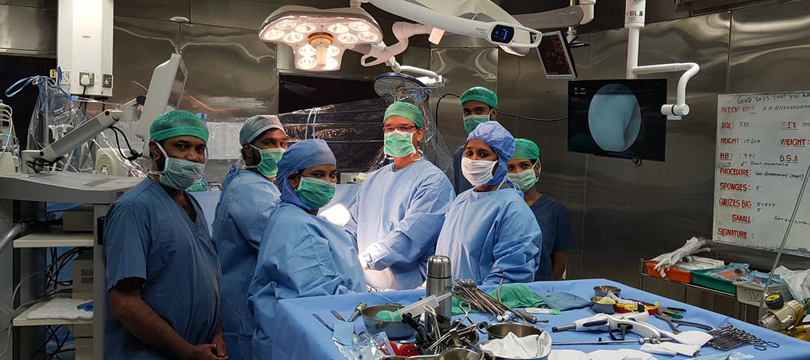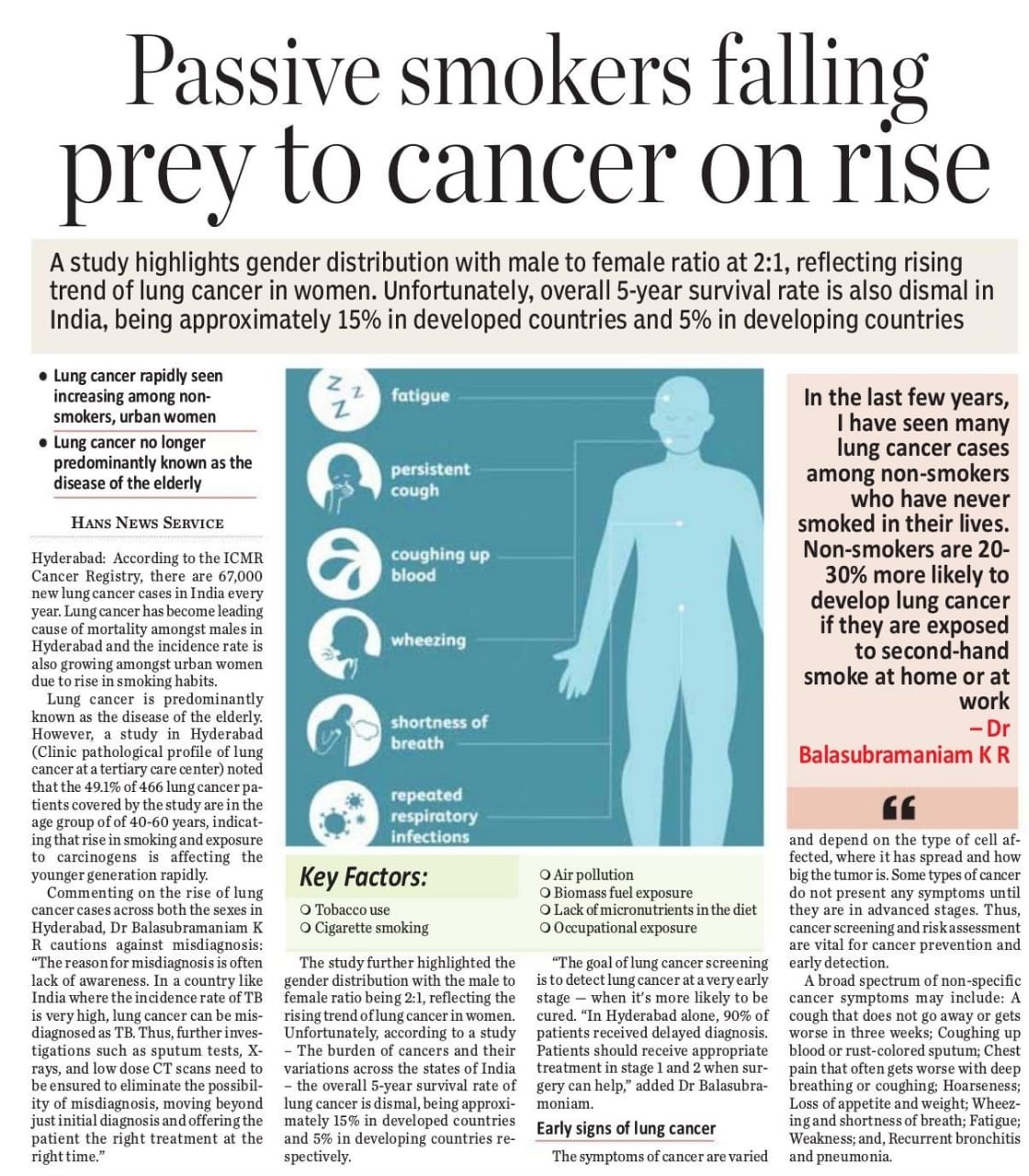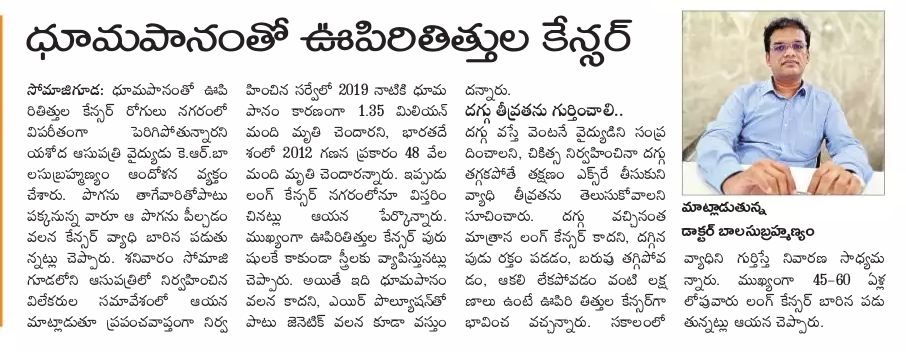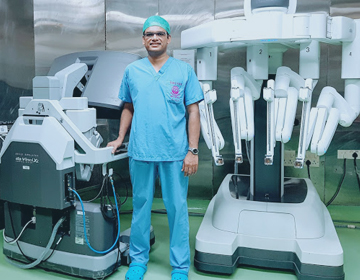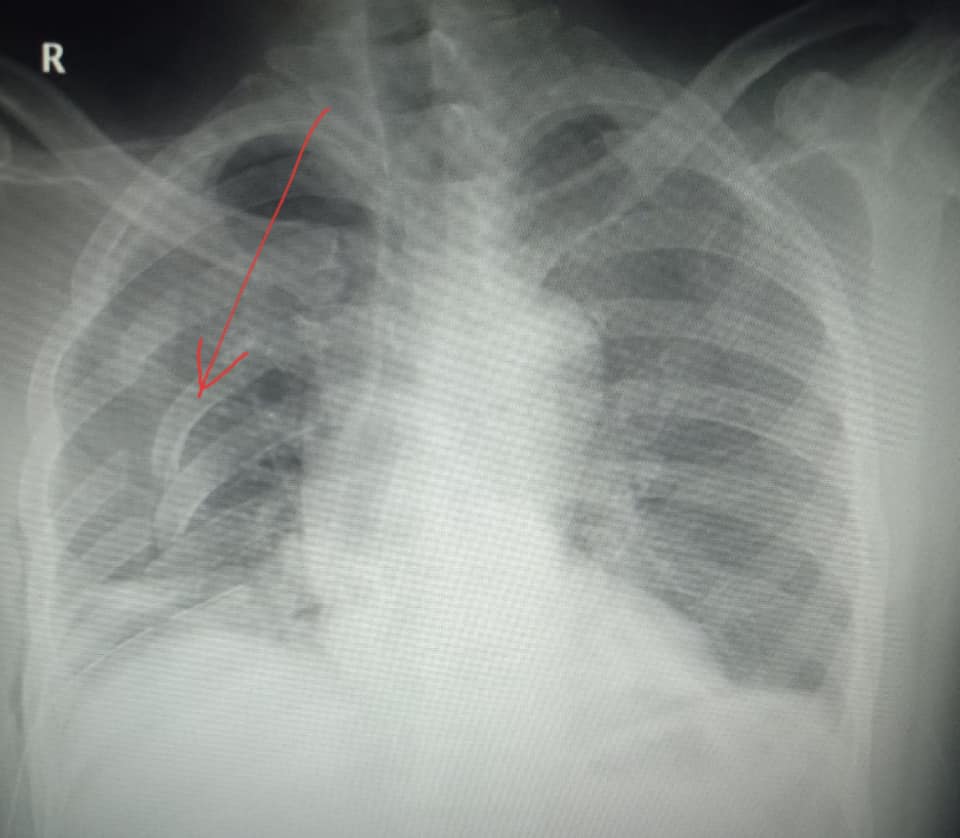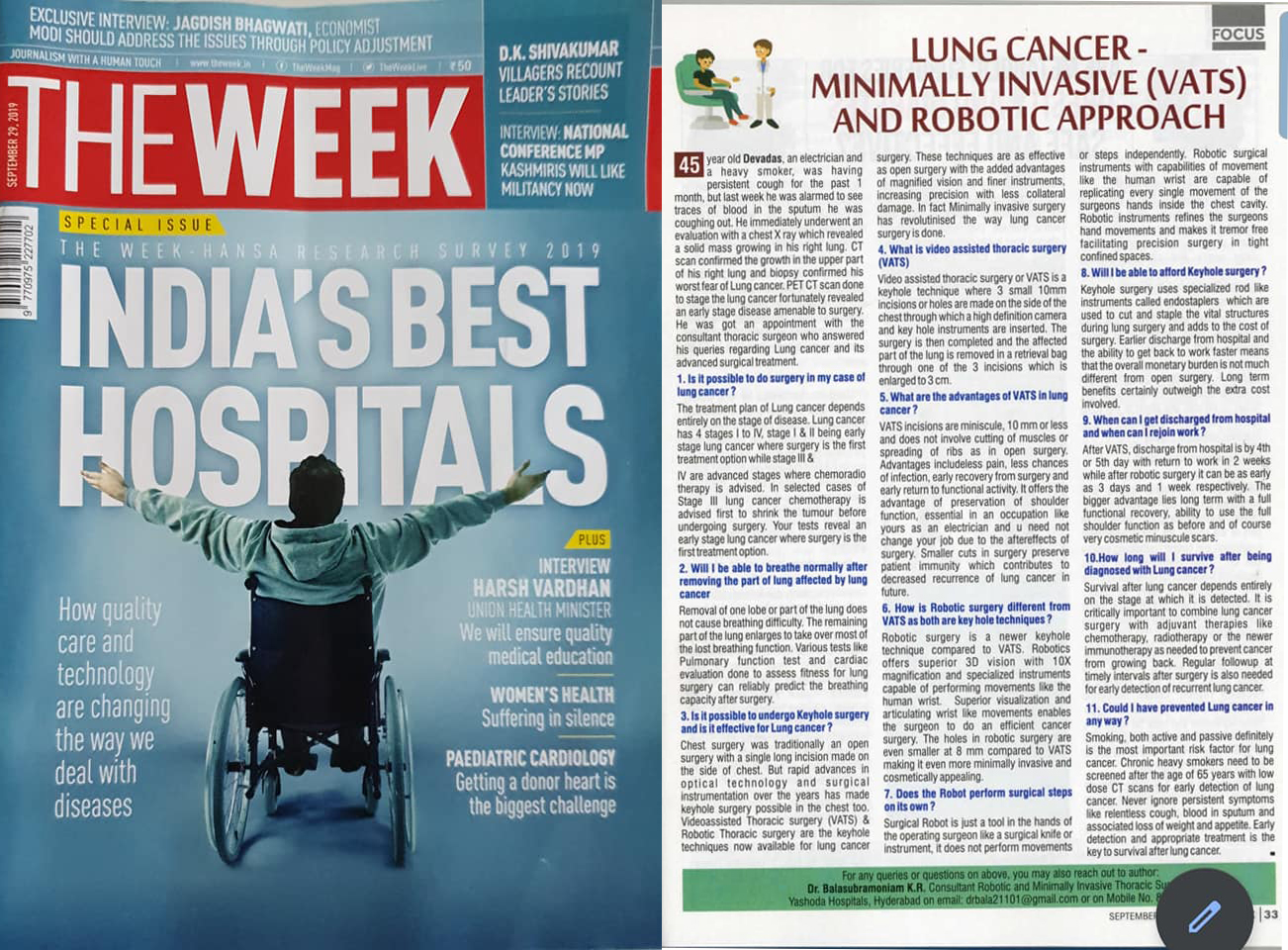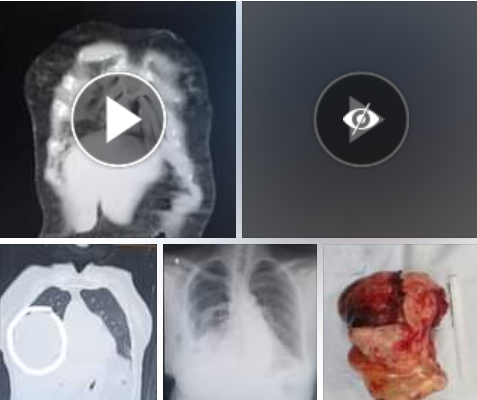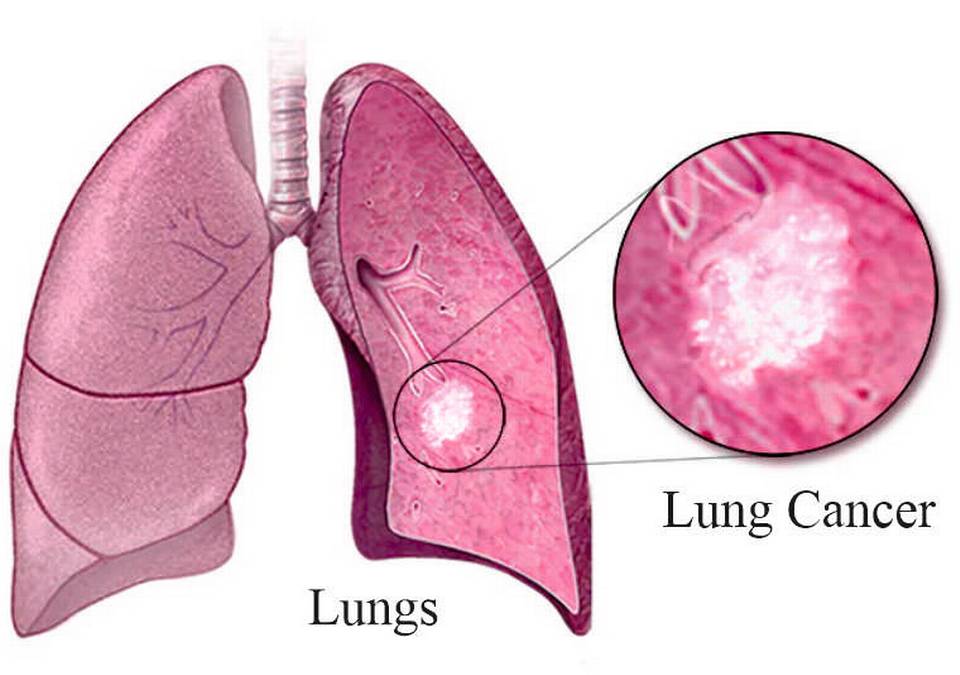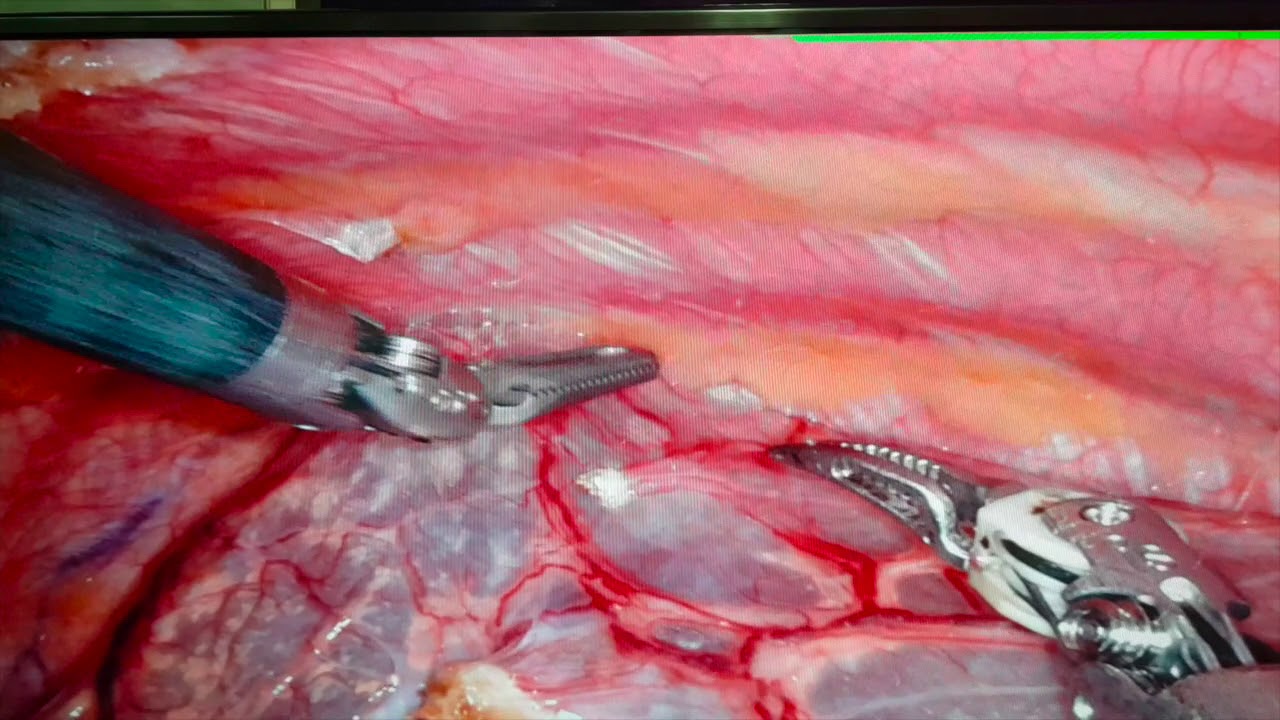VATS and Robotic Writeup
45 year old Devadas , an electrician and a heavy smoker , was having persistent cough for the past 1 month , but last week he was alarmed to see traces of blood in the sputum he was coughing out . He immediately underwent an evaluation with a chest X ray which revealed a solid mass growing in his right lung . CT scan confirmed the growth in the upper part of his right lung and biopsy confirmed his worst fear of Lung cancer . PET CT scan done to stage the lung cancer fortunately revealed an early stage disease amenable to surgery . He was got an appointment with the consultant thoracic surgeon who answered his queries regarding Lung cancer and its advanced surgical treatment .
Is it possible to do surgery in my case of lung cancer ?
The treatment plan of Lung cancer depends entirely on the stage of disease . Lung cancer has 4 stages I to IV , stage I & II being early stage lung cancer where surgery is the first treatment option while stage III & IV are advanced stages where chemoradiotherapy is advised . In selected cases of Stage III lung cancer chemotherapy is advised first to shrink the tumour before undergoing surgery . Your tests reveal an early stage lung cancer where surgery is the first treatment option .
Will I be able to breathe normally after removing the part of lung affected by lung cancer
Removal of one lobe or part of the lung does not cause breathing difficulty. The remaining part of the lung enlarges to take over most of the lost breathing function. Various tests like Pulmonary function test and cardiac evaluation done to assess fitness for lung surgery can reliably predict the breathing capacity after surgery .
Is it possible to undergo Keyhole surgery and is it effective for Lung cancer ?
Chest surgery was traditionally an open surgery with a single long incision made on the side of chest . But rapid advances in optical technology and surgical instrumentation over the years has made keyhole surgery possible in the chest too . Videoassisted Thoracic surgery ( VATS ) & Robotic Thoracic surgery are the keyhole techniques now available for lung cancer surgery . These techniques are as effective as open surgery with the added advantages of magnified vision and finer instruments , increasing precision with less collateral damage . In fact Minimally invasive surgery has revolutinised the way lung cancer surgery is done .
What is video assisted thoracic surgery (VATS)
Video assisted thoracic surgery or VATS is a keyhole technique where 3 small 10mm incisions or holes are made on the side of the chest through which a high definition camera and key hole instruments are inserted . The surgery is then completed and the affected part of the lung is removed in a retrieval bag through one of the 3 incisions which is enlarged to 3 cm .
What are the advantages of VATS in lung cancer ?
VATS incisions are miniscule, 10 mm or less and does not involve cutting of muscles or spreading of ribs as in open surgery . Advantages include less pain , less chances of infection , early recovery from surgery and early return to functional activity. It offers the advantage of preservation of shoulder function , essential in an occupation like yours as an electrician and u need not change your job due to the aftereffects of surgery . Smaller cuts in surgery preserve patient immunity which contributes to decreased recurrence of lung cancer in future.
How is Robotic surgery different from VATS as both are key hole techniques ?
Robotic surgery is a newer keyhole technique compared to VATS. Robotics offers superior 3D vision with 10X magnification and specialized instruments capable of performing movements like the human wrist . Superior visualization and articulating wrist like movements enables the surgeon to do an efficient cancer surgery. The holes in robotic surgery are even smaller at 8 mm compared to VATS making it even more minimally invasive and cosmetically appealing .
Does the Robot perform surgical steps on its own ?
Surgical Robot is just a tool in the hands of the operating surgeon like a surgical knife or instrument, it does not perform movements or steps independently. Robotic surgical instruments with capabilities of movement like the human wrist are capable of replicating every single movement of the surgeons hands inside the chest cavity . Robotic instruments refines the surgeons hand movements and makes it tremor free facilitating precision surgery in tight confined spaces .
Will I be able to afford Keyhole surgery ?
Keyhole surgery uses specialized rod like instruments called endostaplers which are used to cut and staple the vital structures during lung surgery and adds to the cost of surgery . Earlier discharge from hospital and the ability to get back to work faster means that the overall monetary burden is not much different from open surgery . Long term benefits certainly outweigh the extra cost involved .
When can I get discharged from hospital and when can I rejoin work ?
After VATS , discharge from hospital is by 4th or 5th day with return to work in 2 weeks while after robotic surgery it can be as early as 3 days and 1 week respectively . The bigger advantage lies long term with a full functional recovery , ability to use the full shoulder function as before and of course very cosmetic miniscule scars .
How long will I survive after being diagnosed with Lung cancer ?
Survival after lung cancer depends entirely on the stage at which it is detected . It is critically important to combine lung cancer surgery with adjuvant therapies like chemotherapy , radiotherapy or the newer immunotherapy as needed to prevent cancer from growing back . Regular followup at timely intervals after surgery is also needed for early detection of recurrent lung cancer.
Could I have prevented Lung cancer in any way ?
Smoking , both active and passive definitely is the most important risk factor for lung cancer . Chronic heavy smokers need to be screened after the age of 65 years with low dose CT scans for early detection of lung cancer . Never ignore persistent symptoms like relentless cough, blood in sputum and associated loss of weight and appetite . Early detection and appropriate treatment is the key to survival after lung cancer.
